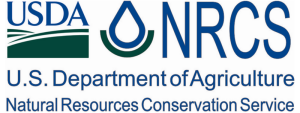NRCS Programs
For more information on United States Department of Agriculture Natural Resources Conservation Service (USDA NRCS) programs below please contact Owen County SWCD or:
Thomas Perkins
District Soil Conservationist
USDA NRCS Southwest Area
1007 Mill Pond Ln Suite C
Greencastle, IN 461354
Direct: 765-653-5716 x146
Cell: 765-592-6134
Email: thomas.perkins@in.usda.gov
www.usda.gov
NRCS’s natural resources conservation programs help people reduce soil erosion, enhance water supplies, improve water quality, increase wildlife habitat, and reduce damages caused by floods and other natural disasters. Public benefits include enhanced natural resources that help sustain agricultural productivity and environmental quality while supporting continued economic development, recreation, and scenic beauty.
Please view this document that explains how to establish eligibility for USDA Programs and
the steps on how to apply for USDA Programs.
Environmental Quality Incentives Program (EQIP):
The Environmental Quality Incentives Program (EQIP) provides financial and technical assistance to agricultural producers to address natural resource concerns and deliver environmental benefits such as improved water and air quality, conserved ground and surface water, increased soil health and reduced soil erosion and sedimentation, and improved or created wildlife habitat.
Conservation Reserve Program (CRP):
The Conservation Reserve Program provides technical and financial assistance to eligible farmers to address soil, water, and related natural resource concerns on their lands in an environmentally beneficial and cost-effective manner. The program provides assistance to farmers in complying with Federal and State laws, and encourages environmental enhancement. The program is funded through the Commodity Credit Corporation (CCC). The Farm Service Agency (FSA) administers CRP, and NRCS provides technical land eligibility determinations and conservation planning.
The Conservation Reserve Program reduces soil erosion, protects the Nation’s ability to produce food and fiber, reduces sedimentation in streams and lakes, improves water quality, establishes wildlife habitat, and enhances forest and wetland resources. CRP encourages farmers to convert highly erodible cropland or other environmentally sensitive acreage to vegetative cover, such as grass waterways, native grasses, wildlife plantings, trees, filter strips and riparian buffers. Farmers receive an annual rental payment for the term of the contract. Cost sharing is provided to establish the vegetative cover practices.
Conservation Reserve Enhancement Program (CREP):
The Conservation Reserve Enhancement Program is a component of the USDA Farm Service Agency’s (FSA) Conservation Reserve Program (CRP). CREP is a public-private partnership program, allowing states, Tribal governments, non-profit and private entities to partner with FSA to implement CRP practices that address high priority conservation and environmental objectives. Partners work with FSA to develop CREP agreements designed to address conservation goals on agricultural lands in specific geographic areas. Possible conservation practices that can be implemented include riparian buffers, filter strips, wetlands, and pollinator plantings.
Conservation Stewardship Program (CSP):
The Conservation Stewardship Program (CSP) helps agricultural producers maintain and improve their existing conservation systems and adopt additional conservation activities to address priority resources concerns. Participants earn CSP payments for conservation performance—the higher the performance, the higher the payment.
Agricultural Conservation Easement Program (ACEP):
The Agricultural Conservation Easement Program helps landowners, land trusts, and other entities protect, restore, and enhance wetlands, grasslands, and working farms and ranches through conservation easements.
Agricultural Management Assistance Program (AMA):
The Agricultural Management Assistance Program helps agricultural producers manage financial risk through diversification, marketing or natural resource conservation practices. NRCS administers the conservation provisions while Agricultural Marketing Service and Risk Management Agency implement the production diversification and marketing provisions.
Healthy Forests Reserve Program (HRFP):
The Healthy Forests Reserve Program helps landowners restore, enhance and protect forestland resources on private and tribal lands through easements and financial assistance. Through HRFP, landowners promote the recovery of endangered or threatened species, improve plant and animal biodiversity and enhance carbon sequestration.
Regional Conservation Partnership Program (RCPP):
The Regional Conservation Partnership Program promotes coordination between NRCS and its partners to deliver conservation assistance to producers and landowners. NRCS provides assistance to producers through partnership agreements and RCPP conservation program contracts.
For more information on these and other NRCS programs please click the link: https://www.nrcs.usda.gov/wps/portal/nrcs/in/programs/
 Owen County Soil & Water Conservation District
Owen County Soil & Water Conservation District